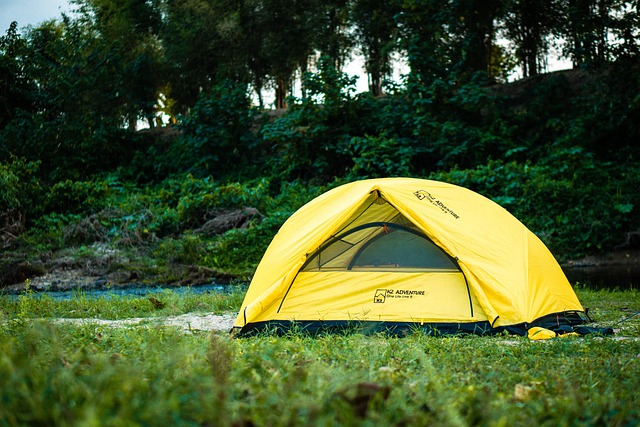Essential Tips for Choosing the Right Tent for Adventures
Selecting the perfect outdoor tent can transform your camping experience from uncomfortable to unforgettable. Whether you're planning a weekend beach getaway, a mountain expedition, or a family camping trip, understanding the key features and considerations will help you make an informed purchase. This guide walks you through everything you need to know about choosing outdoor tents that match your adventure style, budget, and environmental conditions.

When planning outdoor adventures, one of the most critical decisions involves selecting the right shelter. A quality tent provides protection from the elements, ensures comfort during rest, and can significantly impact the overall success of your trip. With countless options available on the market, understanding what makes a tent suitable for your specific needs requires careful consideration of multiple factors including size, seasonality, materials, and budget constraints.
Understanding Outdoor Tents Price Ranges
The cost of outdoor tents varies dramatically based on several factors including capacity, materials, brand reputation, and intended use. Entry-level tents designed for casual camping typically start around $50 to $100, offering basic protection for fair-weather conditions. Mid-range options, priced between $150 and $400, provide better durability, improved weather resistance, and enhanced features like vestibules and better ventilation systems. Premium tents designed for serious adventurers or extreme conditions can range from $500 to over $1,000, incorporating advanced materials, superior construction, and specialized designs for specific environments.
When evaluating outdoor tents price options, consider the cost per use rather than just the upfront investment. A slightly more expensive tent that lasts for years and performs reliably across various conditions often provides better value than a budget option requiring frequent replacement. Additionally, seasonal sales, outlet stores, and previous-year models can offer significant savings without compromising quality.
How to Choose the Right Outdoor Tents for Your Needs
Selecting the appropriate tent begins with honest assessment of your camping style and requirements. Consider how many people will typically use the tent, keeping in mind that manufacturer capacity ratings assume minimal space per person. For comfortable accommodation with gear storage, many experienced campers recommend choosing a tent rated for one or two more people than will actually sleep inside.
Weather conditions you’ll encounter play a crucial role in tent selection. Three-season tents work well for spring, summer, and fall camping in moderate climates, offering good ventilation and adequate weather protection. Four-season tents provide enhanced stability and insulation for winter camping or high-altitude expeditions where snow loads and extreme winds present challenges. Beach-specific tents often prioritize sun protection, sand anchoring systems, and ventilation over heavy weather resistance.
Weight and packed size matter significantly for backpackers who carry their shelter, while car campers can prioritize comfort and space over portability. Setup complexity varies widely between models, with some featuring color-coded poles and intuitive designs that allow solo pitching in minutes, while others require multiple people and more time.
How to Buy Outdoor Tents: Key Features to Evaluate
Before making a purchase, examine several critical features that distinguish quality tents from inferior options. Floor and rainfly materials should use ripstop nylon or polyester with waterproof coatings measured in millimeters. A minimum rating of 1,500mm for the floor and 1,000mm for the rainfly provides adequate protection for most conditions, though higher ratings offer better performance in heavy rain.
Pole construction affects both durability and weight. Aluminum poles offer an excellent strength-to-weight ratio and resist breaking better than fiberglass alternatives, which are heavier and more prone to shattering. Hub systems and clip attachments generally provide faster setup than sleeve designs.
Ventilation features including mesh panels, adjustable vents, and rainfly configurations prevent condensation buildup that can make interiors damp and uncomfortable. Multiple doors and vestibules add convenience for group camping, providing separate entry points and protected storage areas for boots and gear.
Outdoor Tents Price Guide and Comparison
Understanding the market landscape helps identify good value and appropriate investment levels for your camping needs. The following comparison illustrates typical pricing and features across different tent categories from recognized manufacturers:
| Tent Category | Example Provider | Capacity | Price Range | Key Features |
|---|---|---|---|---|
| Budget Camping | Coleman, Ozark Trail | 2-6 person | $50-$150 | Basic weather protection, heavier weight, fiberglass poles |
| Mid-Range Backpacking | REI Co-op, Kelty | 1-3 person | $200-$400 | Aluminum poles, better materials, lighter weight |
| Premium All-Season | Big Agnes, MSR | 1-4 person | $400-$700 | Advanced fabrics, superior ventilation, durability |
| Expedition/Mountaineering | The North Face, Mountain Hardwear | 2-4 person | $600-$1,200 | Extreme weather resistance, reinforced construction |
| Beach/Sun Shelter | Pacific Breeze, Neso | 2-4 person | $40-$150 | UV protection, sand anchors, open design |
Prices, rates, or cost estimates mentioned in this article are based on the latest available information but may change over time. Independent research is advised before making financial decisions.
Essential Accessories and Maintenance Considerations
Beyond the tent itself, several accessories enhance functionality and longevity. A footprint or ground cloth protects the tent floor from abrasion and punctures while adding an extra moisture barrier. Quality stakes appropriate for your camping terrain ensure secure anchoring, with different designs optimized for sand, rocky ground, or soft soil.
Proper maintenance extends tent lifespan significantly. Always dry tents completely before storage to prevent mildew and material degradation. Store in a loose stuff sack rather than tightly compressed to maintain loft in insulation and reduce stress on waterproof coatings. Periodic reapplication of seam sealer and DWR (durable water repellent) treatments restores weather resistance as these coatings wear over time.
Inspect your tent before each trip, checking for damaged zippers, torn mesh, broken poles, and compromised seams. Small repairs made promptly prevent minor issues from becoming major problems in the field.
Making Your Final Decision
Choosing the right outdoor tent involves balancing multiple factors against your specific needs and budget. Prioritize features most relevant to your typical camping conditions and style, whether that means ultralight backpacking gear, spacious family accommodations, or specialized beach shelters. Reading detailed reviews from users with similar requirements provides valuable real-world insights beyond manufacturer specifications.
Whenever possible, examine tents in person at outdoor retailers where you can assess build quality, practice setup procedures, and compare models directly. Many retailers offer satisfaction guarantees or trial periods allowing field testing before committing fully. Remember that the best tent for your adventures is one that matches your actual usage patterns rather than aspirational plans, providing reliable shelter trip after trip while fitting comfortably within your budget.




